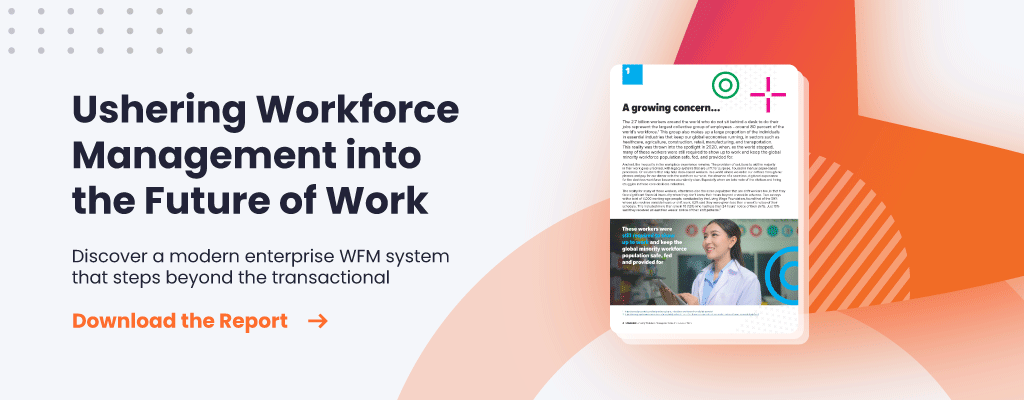Indubitably, the COVID-19 pandemic has accelerated the need for digital transformation. Enterprises around the world were not ready for the disruption and have struggled to support an instant remote workforce. Organizations with frontline workers in non-healthcare sectors, such as Retail, Hospitality or Transportation, were slow in providing a fully safe work environment with tools like contactless clock-in options or digital exposure tracking.
As a result, there has been an increase in demand for software that supports these immediate needs, and some forward thinkers are innovating more broadly by building future-proof tools than just point fixes. However, it is important not to rush to a decision and fall into the trap of a missed opportunity.
When it comes to HCM, should you fix the old or build the new
Many organizations are willing to embrace digital transformation, but they continue to work with vendors who take them down the path of a basic shift with minimal benefits. Even though they claim that using their software will drive a Transformation with a capital “T,” the only gain organizations get is that they get weaned off of costly infrastructure. “Digital Transformation” is more than a cloud-based solution paired with a fancy marketing message and added feature set.
The technology-driven innovations that were transformational in a previous era have become table stakes for staying in business. It’s no longer enough to execute on a digital transformation at the speed of business. You now need digital acceleration. Digital acceleration means making faster progress using data and technology to optimize and transform your enterprise.
- Kristin Moyer, Distinguished VP Analyst, Gartner CEO and Digital Business Leader practice in “The C-Suite Guide. Accelerate Digital for Future-Ready Business”, 2021
Few organizations are asking themselves, “Am I partnering with a team and a solution that can help me leverage the innovative technologies and use cases that can provide me with the edge I need to propel my business forward and lap the field?”.
Most software vendors that have been around for more than 20 years have major “old platform debt ”. They want to innovate and provide ways to use modern technologies such as Artificial Intelligence, Blockchain, Big Data and Predictive Analytics, but their solutions are not future-proof. Expanding a platform that was architected before these technologies existed is challenging. In some cases, the long-in-the-tooth software is also not ready for the level of cybersecurity needed currently and is vulnerable to ransomware.
It’s the dilemma of the homeowner who wants to renovate and expand the footprint of their house: Will it be more costly to tear down and rebuild than to renovate? The other option: Buy a new house. From the point of view of the software vendor, the disruption to their installed base is often considered so great and the cost of a tear down prohibitive, they choose to build on the side, unnatural add-ons.
Customers look to their current software partners first as their logical option to transform. That is a logical first step. It is important not to lose sight of the objectives of this massive and disruptive spend that is turning the organization on its head for years at great cost. Decision-makers are responsible and accountable for moving the organization forward, not just to keep up with the Joneses but to gain a competitive advantage.
Pause and Ask Yourself Questions
Technology has long moved past measuring success as having delivered a project on time and on budget. That should be the lowest setting of the bar. Digital Transformation should be about measurable positive business outcomes that provide a competitive advantage. Some questions you should be asking yourselves when undergoing a digital transformation project:
- Are you picking the same platform as everyone else?
- Is it providing me with the edge I need to run a superior business in the longer term?
- Am I doing innovative and creative new things or just shifting?
- In a few years, will you look back and think this was a missed opportunity?
Partnering with trusted advisors that know can ensure that you have the proper answers to these questions, and they can also help you achieve a better outcome faster.





COMMENTS